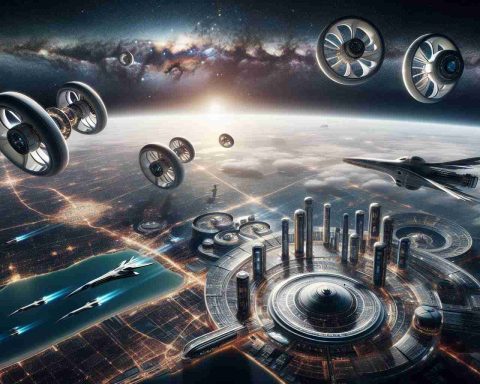- Starship Flight 7 aims to advance space technology with innovative upgrades and new safety measures.
- The mission will test satellite deployment systems for future global internet coverage.
- SpaceX is experimenting with multiple reentry strategies to improve rocket reusability and sustainability.
- The mission highlights the pros of the Starship system, including reusability and versatile mission capabilities.
- Challenges and environmental concerns are key considerations in the continued development of this system.
- Up to 25 launches are projected this year, emphasizing rapid progression in space exploration.
The countdown is on for SpaceX’s Starship Flight 7, an eagerly anticipated mission that promises to push the limits of space technology. On January 13 at 5 p.m. EST, the world’s tallest rocket will soar from SpaceX’s Starbase in Texas, heralding the dawn of a new era in space exploration.
Elevating Innovation: This historic launch features a finely tuned Starship spacecraft enhanced with cutting-edge upgrades. From a more robust flight computer to advanced avionics systems, this mission boldly ventures into new territories of safety and performance.
Simulated Satellite Deployment: Adding to its complexity, the mission includes carrying mock Starlink satellites, laying the groundwork for future global internet coverage.
Revolutionary Return: For the first time, multiple reentry strategies will be tested, spotlighting SpaceX’s commitment to creating a reusable future for space travel. A unique “catch” mechanism aims to softly capture the Super Heavy booster back at its launch site—a key milestone in sustainable aerospace practices. If conditions aren’t ideal, a contingency plan is set for a gentle landing in the Gulf of Mexico.
Pros and Cons of the Starship System
Pros:
– Reusability: A giant leap toward reducing the cost of space access.
– Tech Marvel: Proposing potentially game-changing standards for future spacecraft.
– Versatility: Capable of diverse missions, from commercial to scientific.
Cons:
– Challenges: New technologies bring uncertainties.
– Environmental Impact: Environmental concerns rise with increasing launches.
SpaceX envisions up to 25 Starship launches this year, signifying a dynamic shift in the aerospace industry toward rapid innovation and extensive exploration. As anticipation builds, this mission is set to pave the way for space travel’s future while sparking the imagination of space enthusiasts worldwide.
The Starship Phenomenon: Breaking Barriers in Space Innovation
What Makes SpaceX’s Starship Flight 7 So Crucial?
SpaceX’s Starship Flight 7 stands as a landmark moment in modern aerospace. The launch is crucial due to its innovative strategies and technological advancements in space travel.
1. Technological Innovation: The Starship spacecraft has been enhanced with advanced technology, including a more robust flight computer and state-of-the-art avionics systems. These upgrades are crucial in pushing the limits of safety and performance in space missions.
2. Sustainability Goals: This mission highlights SpaceX’s revolutionary approach to sustainability through reusable rockets. The unique “catch” mechanism designed to softly capture the Super Heavy booster reflects a groundbreaking step toward reducing space debris and achieving cost efficiency.
3. Global Connectivity Vision: Carrying mock Starlink satellites, Flight 7 sets the stage for future plans to provide global internet coverage. This mission plays an integral role in connecting even the most remote parts of the world to the digital network.
How Could Starship’s Launch Impact the Space Industry?
SpaceX envisions up to 25 Starship launches in the upcoming year, signaling a transformative era in space exploration.
– Market Forecasts: The anticipated frequency of Starship launches could make space travel more economical and accessible, encouraging investment and innovation within the space sector.
– Competitive Edge: With SpaceX leading the charge, competitors in the aerospace industry are compelled to accelerate their own R&D efforts, promoting a race toward greater technological breakthroughs.
– Employment Opportunities: The successful execution of multiple missions may spur job creation in engineering, manufacturing, and support services, fostering economic growth in the aerospace field.
What Are the Key Challenges and Limitations of the Starship System?
While the Starship system presents numerous advancements, it also faces several hurdles:
– Technological Uncertainties: The introduction of new technologies can be unpredictable, as real-time adaptations are required to ensure mission safety and improving reliability.
– Environmental Concerns: The environmental impact of frequent launches is significant. The aerospace industry must address the ecological footprint of rocket launches to balance space exploration with planetary preservation.
– Regulatory Hurdles: As launches increase, navigating international regulatory frameworks becomes increasingly complex, requiring diplomatic cooperation to avoid bottlenecks and ensure compliance with global space law.
For more information and insights into SpaceX’s ongoing projects and future innovations, visit the official SpaceX website.














